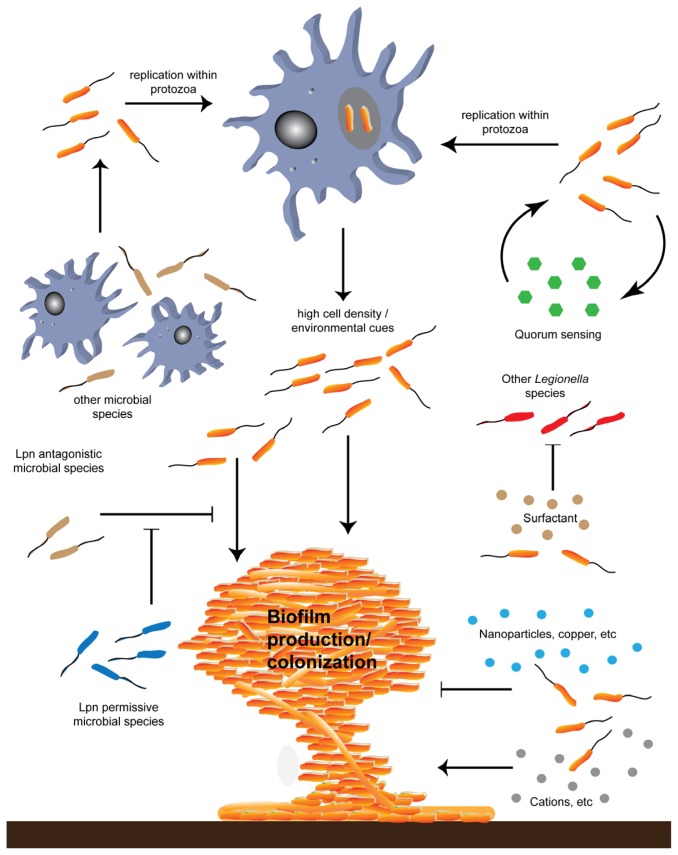Figure 3.
L. pneumophila (denoted by Lpn and shown in orange) replicate within environmental protozoa. Uptake within protozoan hosts is promoted by the presence of other amoebae and bacterial species such as P. aeruginosa (top left) and by environmental cues such as quorum sensing (green hexagons, top right). Environmental cues can also influence changes in L. pneumophila cell metabolism that favour biofilm production and colonization, which may occur following replication within protozoa or independently of protozoa infection (middle). Other microbial species such as P. aeruginosa (Lpn antagonistic microbial species, brown) can inhibit L. pneumophila colonization (bottom left). The presence of other microorganisms such as K. pneumoniae alleviates the inhibitory effect of P. aeruginosa (Lpn permissive microbial species, blue) and allows L. pneumophila to be incorporated within biofilms. L. pneumophila produces a surfactant (brown circles), which is toxic to other Legionella species (red), and may therefore prevent incorporation of these bacteria within biofilms. Physio-chemical parameters such as divalent cations (grey circles) can favour L. pneumophila biofilm colonization while other factors such as the presence of nanoparticles and copper (blue circles) can hinder L. pneumophila colonization.

